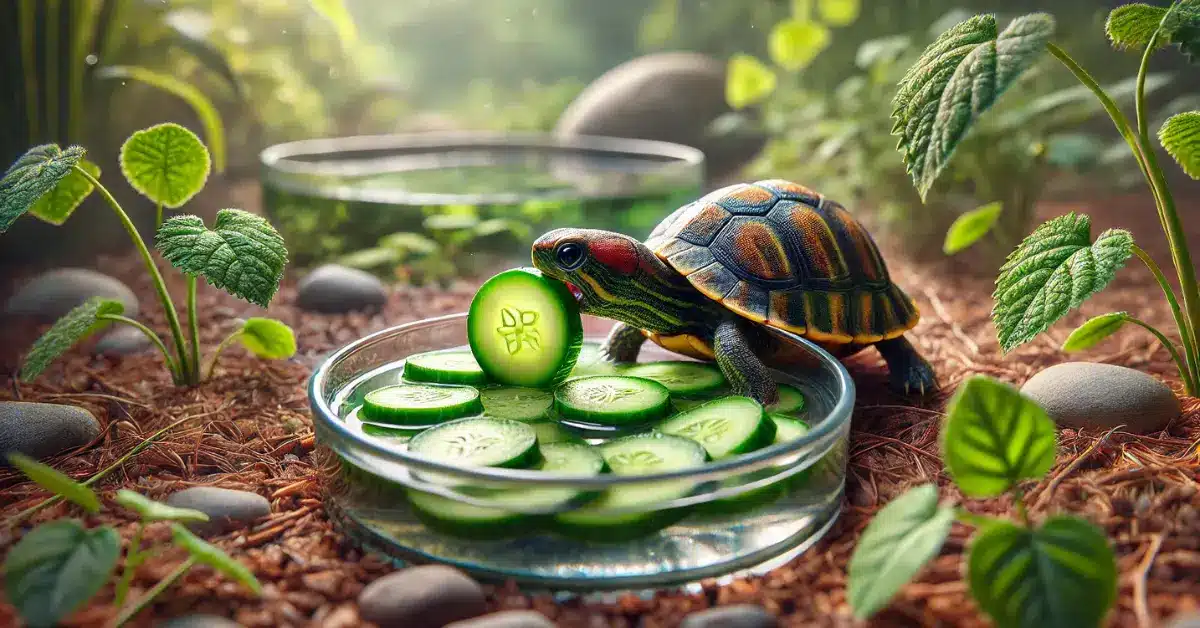Welcome to TheTurtles.info! Today, we’re diving into a fun question: Do Turtles Have Tails? We’ll learn about all the awesome things turtle tails do and why they’re crucial for turtles. So, get ready to learn some amazing turtle facts with us!
Table of Contents
ToggleThe Truth Unveiled: Yes, Turtles Do Have Tails!
Did you know turtles have tails? Some people might not notice them at first, but turtles definitely have tails, and they’re pretty interesting!
Surprising Facts About Turtle Tails
Turtle tails are not just there for looks; they do important jobs. For example, did you know that male turtles usually have longer tails than female turtles? This helps us tell them apart.
How Turtle Tails Differ From Other Reptiles
Turtle tails are different from other reptile tails. While some reptiles have tails that can grab onto things, turtle tails are stiff and can’t do that. Instead, turtle tails help protect a very important area—the cloaca. This is where turtles release waste and also where baby turtles start their life!
The Role of Tails in Turtle Life
- Swimming and Maneuvering in Water: In the water, turtle tails help them swim better. The tail works like a boat’s rudder, helping the turtle steer and move around smoothly. This makes it easier for them to find food and explore.
- Balance and Stability on Land: Turtles also use their tails on land. The tail helps them stay steady and balanced, especially when they’re climbing over rocks or logs.
- Courtship and Mating Behaviors: When it’s time for turtles to find a partner, tails become extra important. Male turtles use their tails to show they’re interested and help in mating.

How Turtles Use Their Tails
Turtles have some cool ways to use their tails. Let’s find out how they help turtles every day!
Communication and Defense
Turtles sometimes talk to each other using their tails. During the time when turtles are looking for a mate, males might use their tails to get the attention of females. If there’s danger or if they want to keep other turtles away, they might flick their tails as a warning.
Aiding in Movement
In the water, turtles use their tails like rudders on a boat. This helps them steer and move around easily, which is great for catching food or getting away from danger. On land, their tails help them stay balanced, especially when they’re climbing over things or moving over rough ground.
Support During Mating
When turtles mate, their tails are very important. The tails help hold the turtles in the right position, making it easier for them to mate properly. This is especially true for male turtles, who often have longer tails.
Additional Functions
In some kinds of turtles, their tails store fat, which can be really helpful. This fat gives them energy when they are hibernating or if there’s not much food around.
Tail Diversity Across Turtle Types
Turtles come in all shapes and sizes, and so do their tails! Different types of turtles have tails that look different and do different things.
Snapping Turtles: The Long-Tailed Champions
Snapping turtles are famous for their long tails. These tails are almost as long as their shells! The long tail helps them balance better in muddy waters and move around on land.
Sea Turtles: Streamlined Tail Design
Sea turtles have tails that are sleek and streamlined. This helps them swim faster in the ocean. Their tails are narrow and pointed, making it easier for them to glide through the water as they travel long distances.
Box Turtles: Short but Mighty Tails
Box turtles have shorter tails compared to other turtles, but their tails are still very important. These small tails help them keep balanced and secure, especially when they’re moving around in thick brush or undergrowth.
The Hidden World of Turtle Tails
Turtle tails are more complex than they seem. Let’s take a closer look inside.
Internal Anatomy and Structure
Inside, turtle tails have muscles and bones that help them move. These tails are an extension of their spine, which means they are very important for the turtle’s movement and overall health.
How Tails Connect to the Turtle’s Shell
The tail is connected to the turtle’s shell at the base. This connection is crucial because it provides support and helps the turtle use its tail effectively, whether it’s for swimming, balancing, or mating.
Caring for Your Turtle’s Tail
Taking care of a turtle means paying attention to its tail because it can tell you a lot about its health.
Health Indicators to Watch For
Keep an eye on your turtle’s tail for any signs of injury or infection. Things like swelling, cuts, or changes in color are not normal. A healthy tail should look clean and match the rest of the turtle’s body in color and texture.
Proper Handling and Tail Care Tips
Be gentle when handling your turtle. Avoid picking it up by the tail, as this can cause serious injury. When you’re cleaning your turtle’s habitat, make sure you also gently clean its tail. This can prevent dirt and bacteria from causing infections.
The Evolutionary Tale of Turtle Tails
Turtle tails have a long history, and they’ve changed in fascinating ways over millions of years.
Ancient Turtle Ancestors and Tail Development
The earliest turtles had tails that were much longer than the tails we see today. These ancient tails were probably used for balance and maybe even for defense against predators.
How Tails Have Adapted Over Millions of Years
Over time, as turtles adapted to different environments, their tails evolved to help them survive better. For example, aquatic turtles developed streamlined tails to help them swim better, while land-dwelling turtles have tails that help them balance on uneven surfaces.
Conclusion
So, do turtles have tails? Absolutely, they do! As we’ve explored on TheTurtles.info, turtle tails are not just there for show; they play a vital part in the lives of these fascinating creatures. From helping them communicate and defend themselves to aiding in movement and mating, turtle tails are essential tools that support their survival and daily functions.
Turtle tails also show us how adaptable and diverse nature can be. Each type of turtle has a tail that suits its unique way of life, whether it’s swimming through the ocean or navigating the forest floor. By understanding these roles, we gain a deeper appreciation for turtles and the complex world they live in.
Remember, the next time you spot a turtle, take a moment to observe its tail. You’ll now understand just how important that part of their body is. Thanks for reading at TheTurtles.info, and keep coming back for more intriguing turtle facts and insights!
Related Blogs:
FAQs about Do Turtles Have Tails
Do all turtles have tails?
Yes, all turtles have tails. The size and shape of the tail can vary greatly depending on the species of the turtle.
Why do turtles have tails?
Turtle tails serve multiple purposes, including aiding in movement and balance, helping in mating rituals, and serving as a form of communication among some species.
Can a turtle lose its tail?
While it’s rare, turtles can lose parts of their tails due to injury. Unlike some other reptiles, turtles cannot regrow their tails.
Do turtles use their tails for swimming?
Yes, many aquatic turtles use their tails as rudders to steer themselves in the water, which helps them navigate and maintain stability.
Are turtle tails sensitive?
Yes, turtle tails are sensitive as they contain nerves and blood vessels. It’s important to handle turtles gently to avoid injuring their tails.
What does the length of a turtle’s tail indicate?
In many turtle species, the length of the tail can help indicate the gender of the turtle. Generally, male turtles have longer tails than females.
How do turtles use their tails on land?
On land, turtles use their tails to help maintain balance and stability, especially when maneuvering through uneven terrain or when they need to elevate their bodies for sunbathing.
What should I do if my turtle’s tail looks injured?
If you notice any signs of injury or infection on your turtle’s tail, such as swelling, redness, or bleeding, it’s important to consult a veterinarian who specializes in reptiles.
Do turtles feel pain in their tails?
Yes, turtles can feel pain in their tails. It’s crucial to handle them carefully to avoid causing stress or injury.
How can I take care of my turtle’s tail?
Keep your turtle’s living environment clean and handle your turtle gently. Regularly inspect their tail for any signs of damage or infection and seek veterinary care if needed.






